Bivalves
Hardshell clams and mussels have been a subsistence harvest species for millennia as well as a popular recreational harvest species in the northern Gulf of Alaska region. Dramatic declines of hardshell clams in the region over the past decade have raised concern in Kachemak Bay community members, the Seldovia Village Tribe (SVT), and resource managing agencies, such as Alaska Department of Fish and Game (ADF&G).
Clam success varies across species, size, and life history stages, and depends on past and present environmental exposure. Within the Interface of Change project, researchers will collect data on clam success and environmental conditions. Where available, historical data provided by partners (ADFG and SVT) will supplement our data collection. The goal is to use field and historical data to look for relationships between coastal environmental qualities with the distribution, abundance, biomass, size distribution, and body condition of hardshell clams.
Hardshell Clams

Population Abundance & Physiology
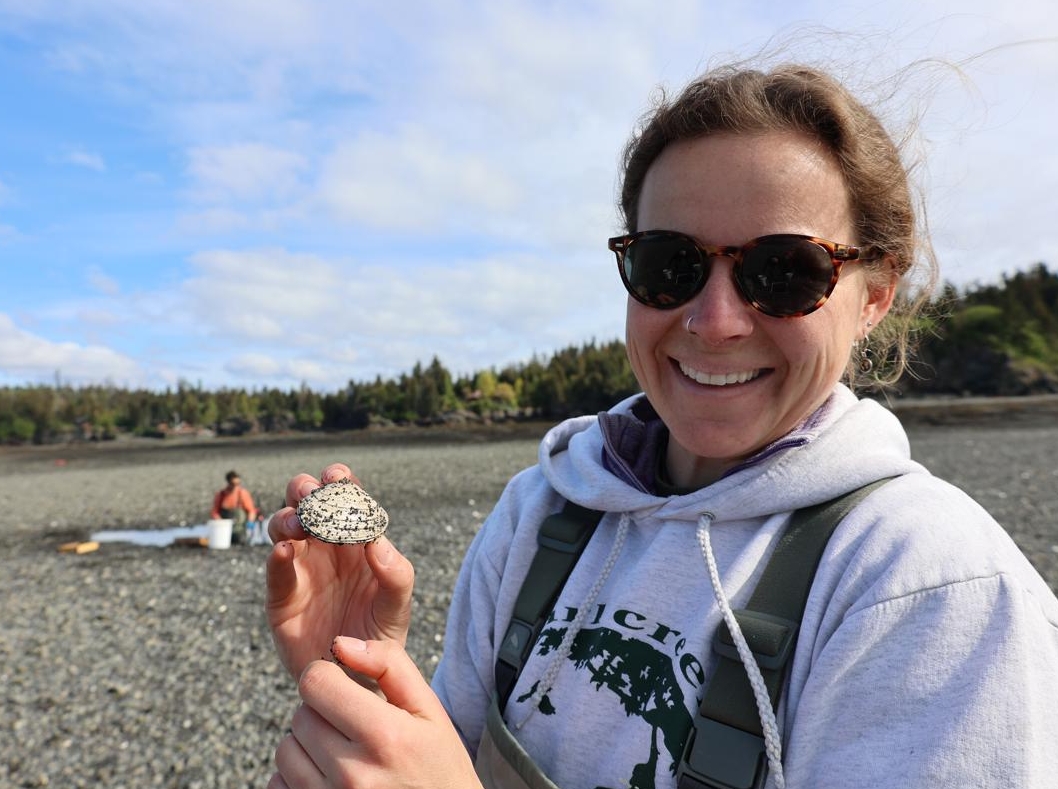
In effort to better understand why clam populations are declining in Kachemak Bay, a team led by UAF marine biologist Katrin Iken and graduate student Hannah Gerrish is characterizing the physiology, distribution, and abundance of butter clams (Saxidomus gigantea) and Pacific littleneck clams (Leukoma staminea) at beach sites in Kachemak Bay.
They are looking for any correlations between clam physiological data and environmental factors, such as water turbidity and salinity, using aquatic data loggers installed at each site.
In addition, they are consulting historical Alaska Department of Fish & Game records to investigate whether the average clam body size for each species has changed over time, and whether body size can be correlated with any environmental factors.
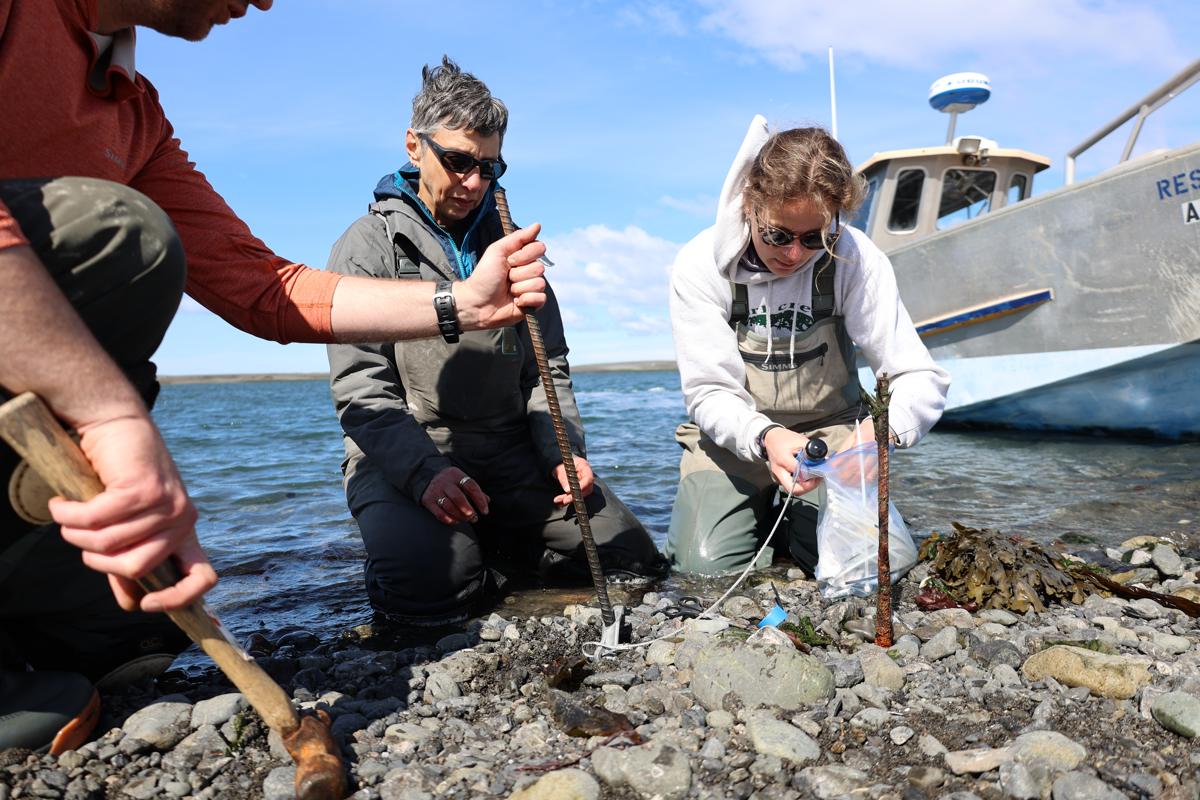
Metabolic Analysis
To examine how environmental properties affect the metabolic health of hardshell clams, UAA environmental chemist Pat Tomco and postdoctoral researcher Monica Brandhuber are comparing the detectable metabolites in harvested clams across sampling sites in Kachemak Bay. In the ASET lab, they are running clam tissue samples through Liquid Chromatography-Mass Spectrometry (LC/MS) equipment.
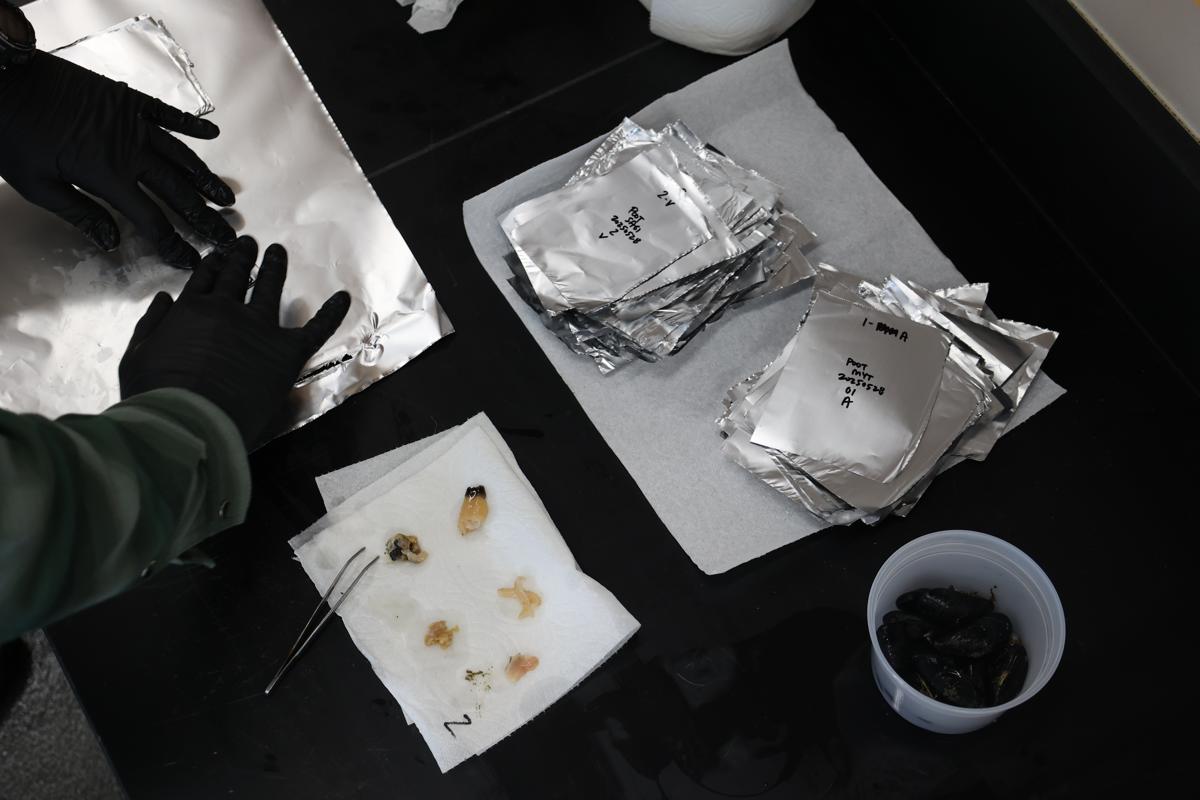
Population Genomic Spatial Variation
Restoring and cultivating clam populations requires a thorough understanding of their population genomic structure. Despite their importance as subsistence species, no studies have previously assembled the genomes of hardshell clam species in Alaska.
UAF fish geneticist Jessica Glass and graduate student Rachel Lekanof hypothesize that hardshell clam genomes vary in accordance with environmental conditions across the Gulf of Alaska.
In partnership with the intertribal Chugach Regional Resources Commission (CRRC) and scientists at the Alutiiq Pride Marine Research Institute, Glass and Lekanof employ high-throughput genomic sequencing to characterize the extent to which gulf populations of butter clams (Saxidomus gigantea) and Pacific littleneck clams (Leukoma staminea) and exhibit genetic connectivity and local adaptation.
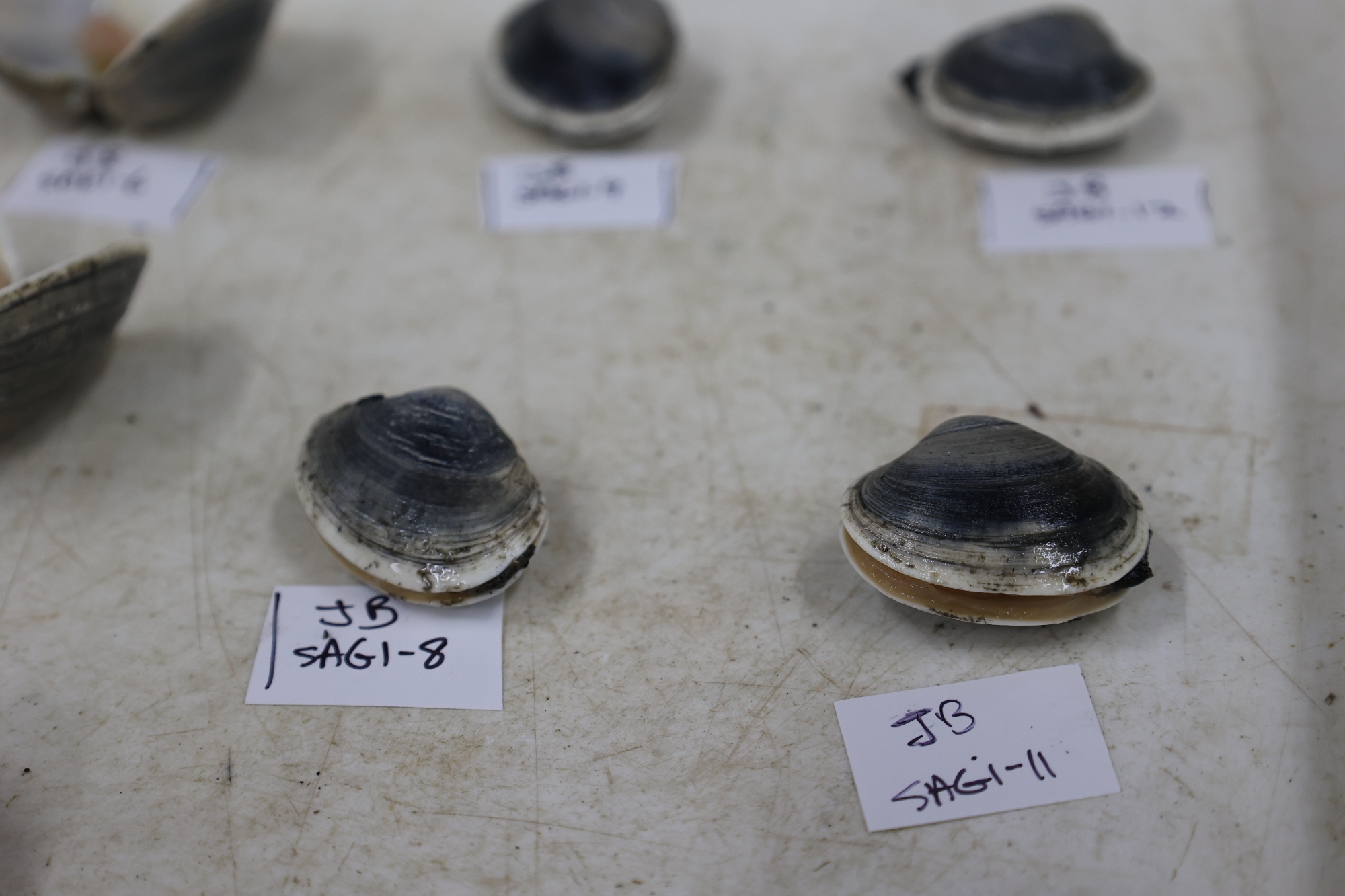
Population Life History Stage Detection Using eRNA
Environmental DNA sampling is a technique that allows environmental scientists to detect what species are present in an environment by running tests on a sample of water, or another type of environmental sample. This method offers a powerful approach to characterize biodiversity and distinguish species, even populations of species, across the tree of life.
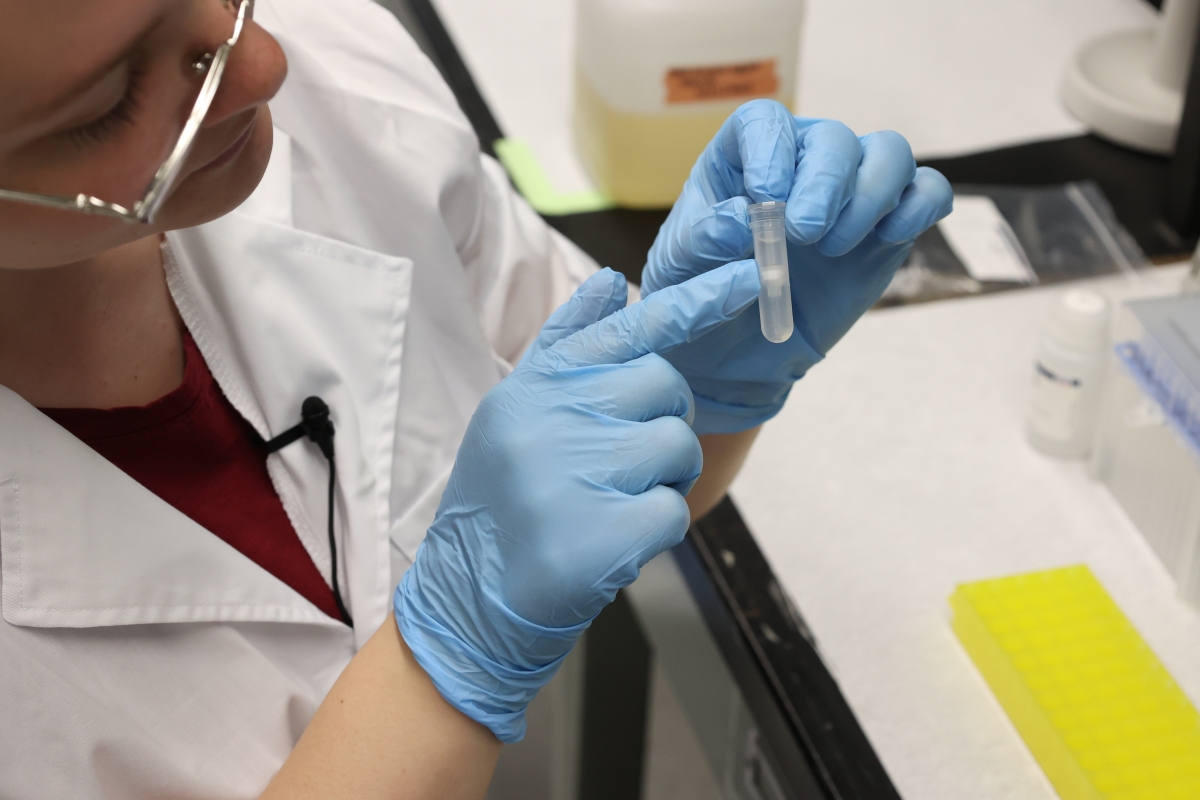
Currently, when scientists work with environmental DNA, or eDNA for short, their methods focus primarily on DNA. However, a limitation of eDNA is the inability to differentiate between life history stages of the same species. In the case of fish and shellfish, different life stages include larval, juvenile, adult, and spawning events. Being able to distinguish what life stage is present would provide additional valuable information for science, population management, and cultivation of marine species.
In collaboration with the Alutiiq Pride Marine Research Institute, Jessica Glass and her lab are experimenting with eRNA assays - environmental RNA - to see if we can use eRNA in place of eDNA to distinguish between larval and adult littleneck and butter clams. Because RNA regulates gene expression in organisms which changes over their life history, eRNA may be an effective tool for quantifying juvenile versus adult clams in a population.
Mussels
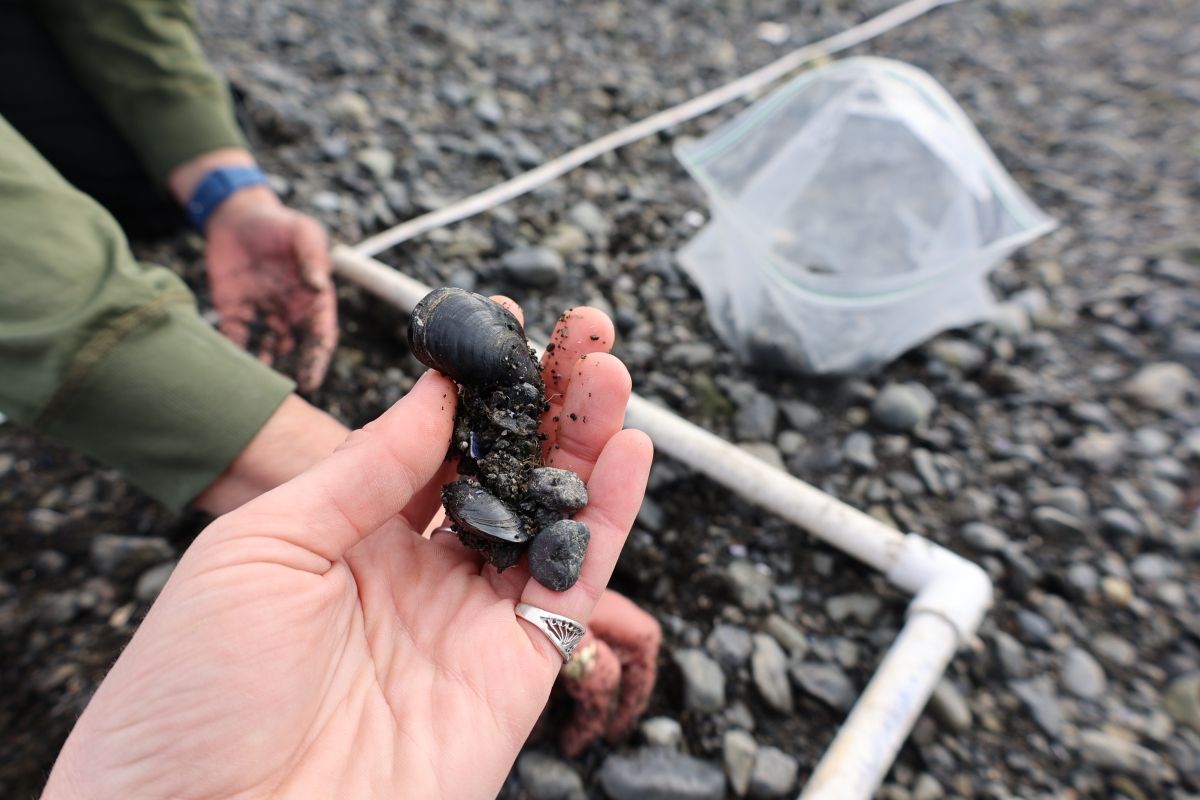
Mussels are also an important species for harvesting in the Gulf of Alaska, both for subsistence and mariculture. In recent years, mussel populations have become destabilized.
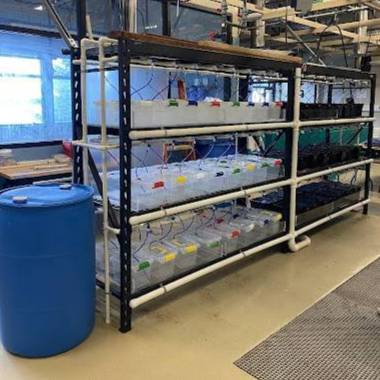
A growing body of research suggests that variable environmental conditions, such as the changing of tides, play an important role in organismal adaptation. UAS marine biologist Julie Schram is leading a team to determine how Pacific blue mussels respond to varying environmental conditions over varying time periods.
To do this, Schram and UAS hydrologists Jason Fellman and Eran Hood are gathering environmental data from intertidal marine and stream water quality sensors deployed in Lynn Canal.
In conjunction with gathering field water quality data, Schram is conducting a series of controlled laboratory experiments that expose mussels to a simulation of natural variation of environmental conditions. The experimental setup will compare mussel response to different combinations of shifts in salinity, pH, turbidity, and temperature over varying periods of time.

